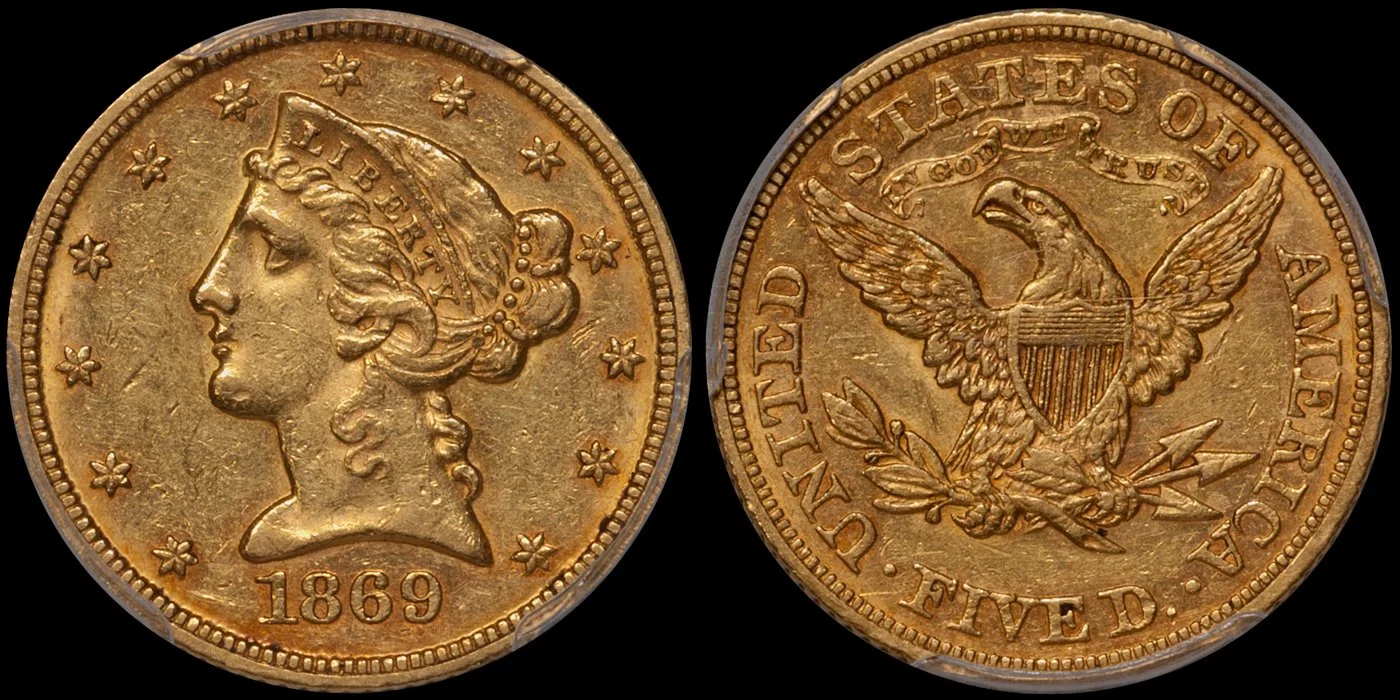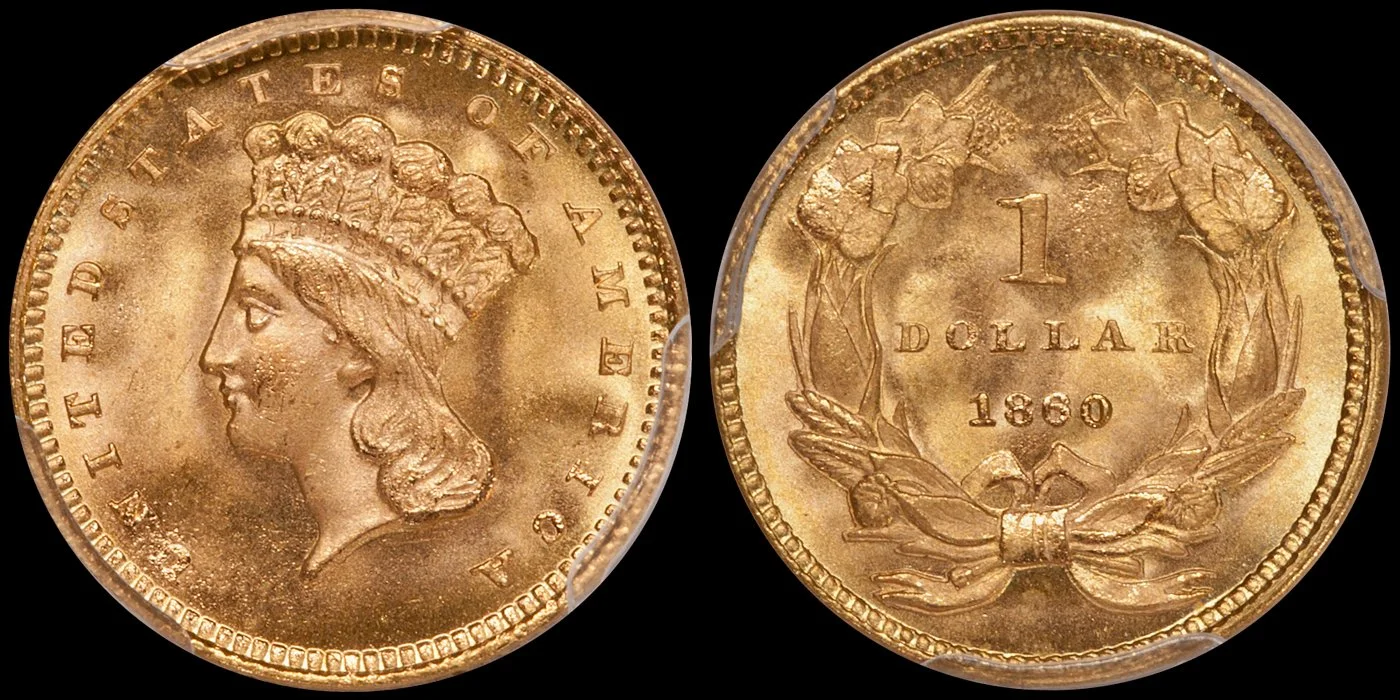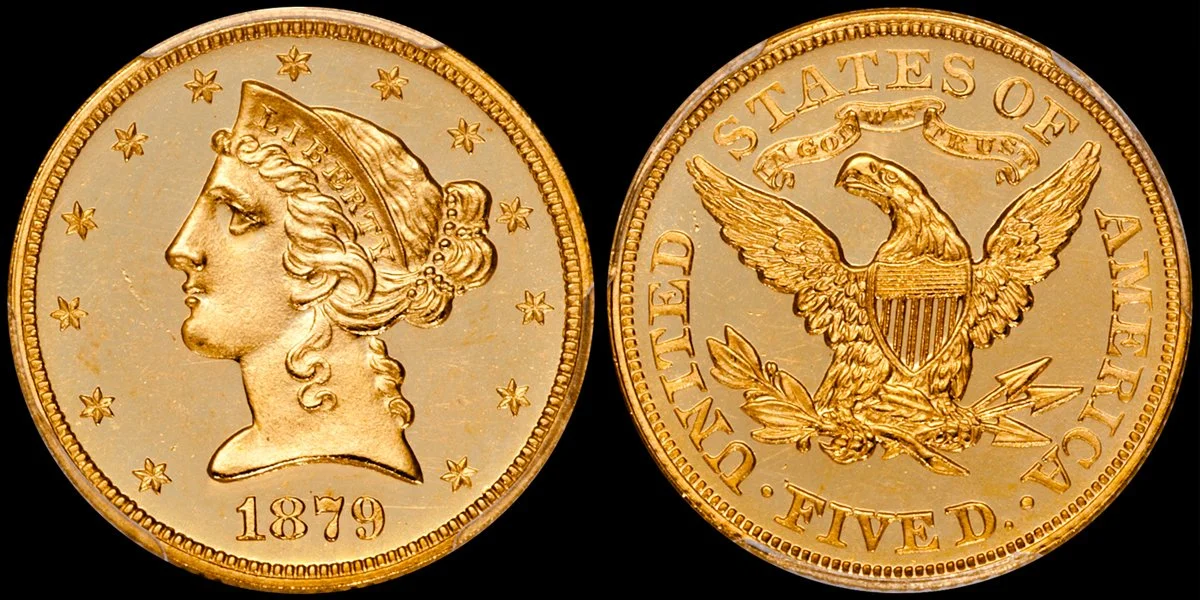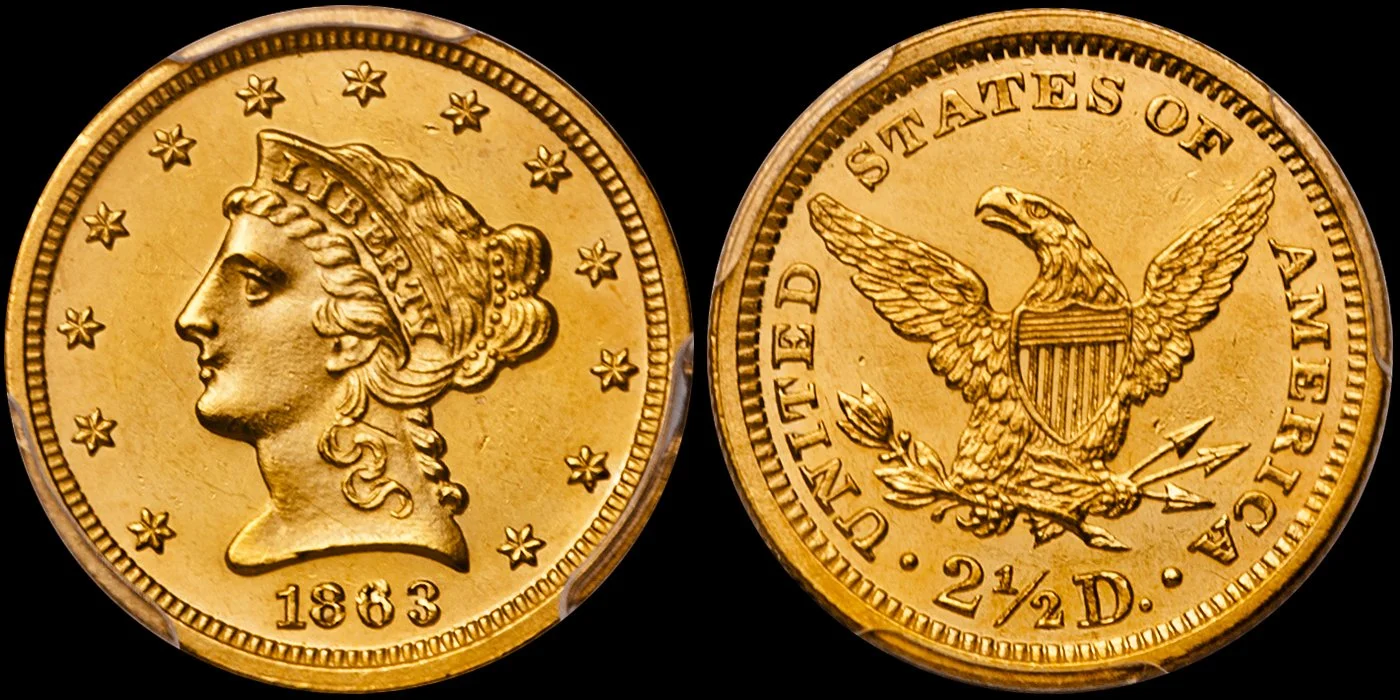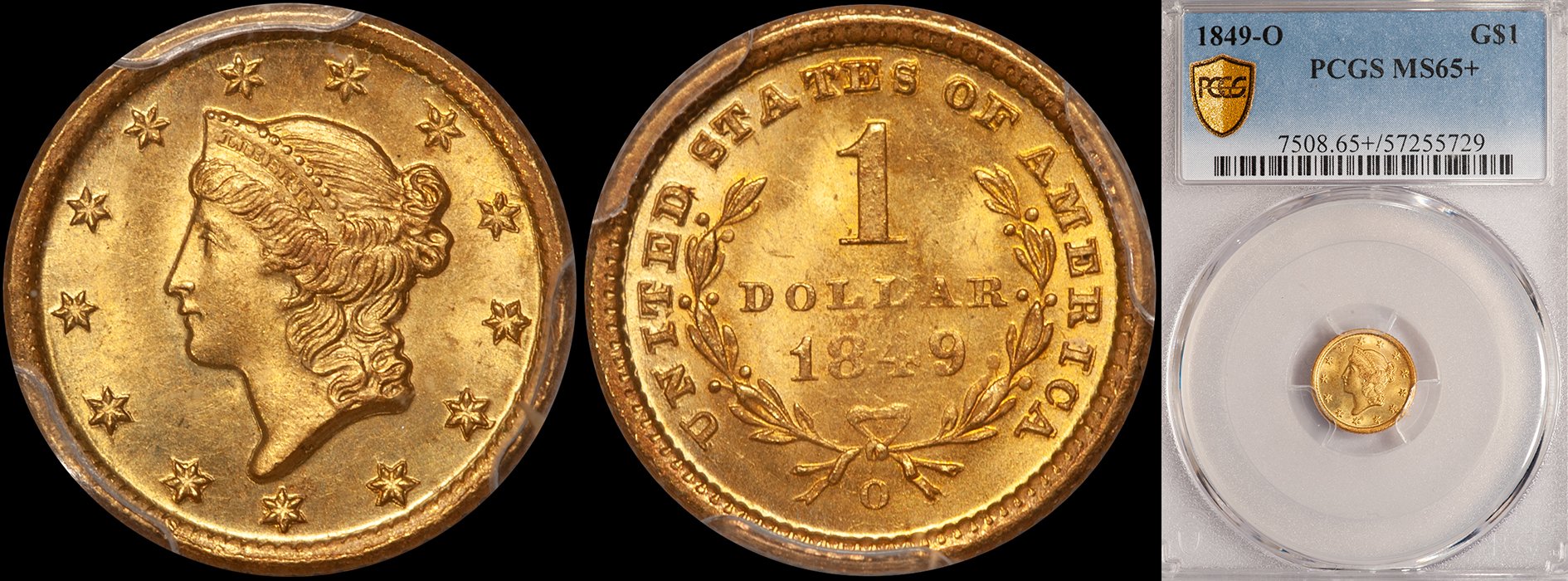What Was Hot and What Was Not: The 2021 Rare Date Gold Market
/As recently as 2019, when I wrote my annual State of the Dated Gold Marker report, it was harder to list the “hot” areas of the market than it was the “not hot” areas. Fast forward to December 2021 and I’m hard-pressed to include a single area of the dated gold market that isn’t at the very least “hot” or in some cases “on fire.”
One of the many Unintended Consequences of a Pandemic (2020-2021++ Version) was that with most people stuck at home for a substantial period of time, and with their average monthly bills slashed by significant percentages, coins were discovered/rediscovered by a large number of new buyers.
These buyers were mostly unencumbered by the numismatic do’s and dont’s, which characterized pre-Covid collectors. They were more inclined to buy coins online than any other group of collectors in history, and online-focused retailers saw their businesses expand exponentially. It also meant a new group of buyers who had no qualms about spending six or seven figures on a coin essentially sight-unseen which, in turn, made choice PCGS/CAC worth sizable premiums in many US gold series due to the fact that such coins tend to be more visually appealing than their unstickered counterparts.
"Dogecoin"
Other significant changes which are largely Due to Covid include an openness of collectors to focus on previously unloved mints and series (see below), a move towards larger-sized coins which just looked more impressive to the new collector when seen on his/her screen, an influx of younger collectors who brought with them an aggressive collecting/investing strategy which was partly a spin-off of day trading, and crypto-currency trades and, finally, a general reinvigoration of the market to a degree not seen in years.
Prices for many US rare date gold coins increased significantly in 2021. Is this sustainable? I think it is, although the real problem I see in this market is supply. EVERY dealer I speak to, whether they deal in generic gold, Gem better date 20th century issues, or collector grade branch mint pieces, tells me that they are having an exceedingly tough time buying. Remember when we, as dealers, were wishing that people who were buying our coins would hold them for a longer time? Well, be careful what you wish for because many of the new buyers are doing exactly this which leaves us with a serious supply problem.
I’m going to limit the “what was hot” portion of this article to five areas, but I could just as easily have chosen another dozen. The “what was not hot” will be modified for this edition by a “what was kinda hot but could get even hotter” portion.
WHAT WAS HOT, 2021
1. Carson City Gold, especially double eagles
Let’s set the Numismatic Time Machine back to 2017/18. The Fairmont Hoard had spilled a gazillion common and slightly better date CC twenties into the marketplace. I was able to buy groups of 10, 20, or even more examples of dates such as 1874-CC, 1875-CC, 1876-CC, 1882-CC, 1883-CC, 1884-CC, and 1890-CC. The coins in these groups were outstanding (I’d estimate that at least one-third and maybe as many as one-half either stickered at CAC or were nice enough to have), and prices suddenly went into a freefall.
We didn’t know exactly how many CC double eagles were in this hoard but, as I can clearly recall, in 2018 it seemed that these coins were everywhere. Compounding this situation was that the two leading retailers of CC twenties had either curtailed or shelved their programs for these coins, making the level of demand for them next to nothing.
1891-CC $20.00 PCGS AU53 CAC
Fast forward to 2021 and CC double eagles have become a coin that everyone wants. Supplies of better dates such as the 1871-CC, 1878-CC, 1879-CC, 1885-CC, and 1891-CC (which were not present in significant quantities in the Fairmont Hoard) have all but dried up while even common dates, which had cratered to values not seen since the mid-2000s, became sought-after. Today, any decent slabbed EF common date CC is worth over $4,000 while commercial quality AU55 coins are hovering over the $6,000 mark.
1882-CC $5.00 PCGS AU58 CAC
In 2021, Carson City half eagles and eagles saw strong price gains as well. There were amazing prices seen for individual rarities (such as the infamous $1.62 million 1870-CC double eagle), but even reasonably available coins showed strong prices increases. As an example a PCGS/CAC 1882-CC half eagle was a coin which I could buy fairly routinely for $5,000 as recently as mid-2019. By the end of 2021, I was likely to have to pay $7,500 or so for the same coin.
Are CC gold prices sustainable in 2022 and beyond? As long as there are seemingly large numbers of new buyers in the market, I would say yes. Remember: these new buyers don’t recall the Gold ‘Ol Days of $3,000 AU55 1884-CC twenties. They see that the last few APRs for a 55 are above $5,000, and this IS the market.
2. Formerly Unloved Issues
If you’ve followed my internet writings (dating back to 1996!), or if you’ve chatted with me at shows, on the phone, or even via email or text messages, you know I’ve long said that the Philadelphia and San Francisco quarter eagles, half eagles, and eagles struck prior to 1890 were extremely collectable and—in many cases—extremely undervalued.
1869 $5.00 PCGS AU58 CAC
The New Wave of post-Covid rare date gold buyers looked at the various 19th century gold issues and saw that there were tremendous values to be had in these three series. To them, the statistics which could be gleaned from the PCGS and CAC population reports offered indisputable proof that coins like an 1869 half eagle or an 1872 eagle were really rare, both from an absolute and a high grade perspective. Yet these coins had remained flat in price for years; many showing essentially no price increases since 2000.
In very thinly traded markets, it takes just a few new buyers to jumpstart prices; especially in the higher end. So when these new buyers began to chase high(er) quality coins of this ilk—especially Condition Census coins with CAC approval—we saw prices rise on some heretofore “esoteric” (a dealer code word for “unsalable”) issues.
There are still some outstanding values in these areas. For less than $2,000 you can buy a very nice (and very scarce) AU Philadelphia quarter eagle from the 1840s or one from the 1870s. For around $5,000 you can buy a number of conditionally scarce No Motto half eagles and eagles from San Francisco—as well as from Philadelphia.
I, for one, was very pleased to see new collectors in the dated gold market who were not only willing to buy the more traditionally sought-after Charlotte and Dahlonega issues.
3. “Trash Gold” Comes of Age
Trash Gold refers to slightly scarcer dates in the half eagle, eagle, and double eagle which are too scarce to be sold as Generics but which are too common to be collected by specialized collectors.
Let’s use fish (!) as an analogy. Perhaps the single worst-named fish I am aware of is the Slimehead; a species that until the mid-1980s was considered trash and which was thrown away or used for fertilizer. Then, someone got the idea of renaming it Orange Roughy, and it became a beloved staple on many a seafood restaurant menu.
The Fairmont Hoard contained thousands of numismatically interesting coins, but it contained about ten times as much Trash Gold; coins like 1888-S half eagles in MS62, or 1885 eagles in MS63. It would be easy to sell the Low Hanging Fruit like the 1871-CC double eagles or the No Motto New Orleans eagles, but how do you go about selling tens of millions of dollars of the less popular items? You turn it into the numismatic equivalent of Orange Roughy!
These are coins which during a soft market have relatively small market premium factors over a generic date. In the case of the Fairmont coins, it took good marketing and a strong overall market for dealers to make a compelling pitch that these coins were overlooked and undervalued. (In my opinion, they are both, but I don’t have the manpower to create end-users for them).
Issues which had virtually no market premium factor until recently now command premiums as high as 20-30+%.
1894-S $20.00 PCGS MS63
This is especially true in the Type Three Liberty Head double eagle series. I could give you dozens of examples but let’s look at one coin in particular; the 1894-S in MS63. Until early 2020, this was a date which should have sold for a premium over a generic but you were doing well if you could get an extra $100 for it. In just a year, it’s a coin which has essentially risen 30% in price.
In my opinion, this is the least sustainable of the hot markets which I’m featuring in this article. No matter how much demand is created, there seems to be an unending supply of these coins. I don’t think the market premium factor will ever go to zero on coins such as an MS63 1894-S $20 but I don’t see the premium factor continuing to grow at such a breakneck pace.
4. Good ‘Ol Fashioned C+D Gold
Around a year and a half ago, I began to notice an interesting trend in gold coin availability. Nice quality Charlotte and Dahlonega gold—the meat n’ potatoes of my business—had suddenly become really hard to find. As recently as 2018, I typically had maybe five or six nice EF and AU Charlotte and Dahlonega coins in stock. A year later, I typically had two or three of each. In 2021, it was not uncommon for me to have none.
Prices really seemed to zoom upwards around July 2021 when Heritage sold a set of Charlotte gold called the Utah Collection. The quality of this set was spotty with some really nice coins (especially quarter eagles) mixed-in with some really yucky coins. But it didn’t seem to matter to collectors as some of the higher grade pieces in this collection sold for record or near-record prices. Examples that stood-out included an NGC MS62 1839-C quarter eagle at $55,200 (which made the choice PCGS MS62 Bass coin I had sold a few weeks before are around half the price seem stupidly cheap), an NGC MS62 1851-C half eagle at $44,400 and a PCGS AU53 1861-C which brought a strong $28,800.
1839-C $2.50 PCGS MS62, ex Bass
At the ANA show, I found it incredibly difficult to buy C+D gold and even the washed-out junk that typically trades cheaply amongst bottom feeders was bringing decent money.
The next sign that this market was getting Double White Hot was the Great Collections auction of (mostly) old holder coins which sold right after the ANA show. I carefully viewed the coins and bid aggressively (at least I thought so…) only to get smoked on all but three coins. The single most impressive price in this sale was a common 1854-D graded EF45 by PCGS and awarded a gold sticker by CAC. It was in an old green holder and I graded it a solid AU55 which, in my opinion, made it worth around $5,000. It brought an insane $17,156.
As the year comes to a close, it seems that the demand for nice C+D gold (especially quarter eagles and half eagles) is the highest in many years. This is true all the way from No Grades to Finest Known Gems. I see this demand continuing through 2022 and beyond.
5. Six and Seven Figure Rarities
While I don’t know this for sure, my guess is that more seven figure US gold coins were sold in 2021 than in any other year in Numismatic History. Transactions of this magnitude used to create a frenzy. Today, they barely cause observers to look up from their screen.
The bottom line is that a million dollars ain’t what it used to be; at least when it comes to coins.
Several ultra-expensive US gold coins sold for record-setting prices in 2021. In fact, three of the four all-time price records for any American coin occurred this year.
1933 $20 PCGS MS65, sold by Sotheby’s in June 2021 for $18,872,250
1822 $5 PCGS AU50, sold by Stack’s Bowers in March 2021 for $8,400,000
1804 Plain 4 $10 PCGS PR65 DCAM, sold by Heritage in January 2021 for $5,280,000
I expect 2022 to be another very strong year for Classic Rarities, as there appear to be a number of collectors chasing these big coins.
WHAT WAS KINDA HOT IN 2021 BUT WHICH COULD GET A LOT STRONGER IN 2022
If it was gold, an American coin struck prior to 1933 was likely hot in 2021. The following series/types didn’t see as much activity as the series/types I listed above but they could easily see considerably more interest in 2022.
1. High Grade Gold Dollars
Six or seven years ago, the very high-end of the gold dollar market saw three avid collectors competing for very high-grade better date gold dollars. With the sale of the Duckor Collection in 2015 and the Simpson gold dollars over the course of the last two+ years, this left the Bender Collection as the finest set. But with this set now almost impossible to upgrade, there is a void at the very top of this market.
1860 $1.00 PCGS MS67 CAC
Prices for exceptional gold dollars haven’t really dropped but with less competition, there are some good values. If another one or two serious collectors enter this market, I think we could see strong increases in price, especially for any business strike gold dollar which is PCGS/CAC MS67 or finer with a population of five or less in that grade and finer.
It should be noted that the branch mints issues are a separate matter entirely.
2. Proof Gold
In most sizzlin’ coin markets, price surges are led by Proof gold. This market doesn’t feel the same way as buyers have seemingly flocked to rare, high-grade business strikes. In my opinion, a lack of significant Proof gold available to collectors and investors in the last 18 months has kept this segment from moving higher.
1879 $5.00 PCGS PR64+ DCAM CAC
The areas of the proof gold market which feel the most “undervalued” (I put this in quotes as it is hard to call five and six figure Proof gold as lacking in price…) are virtually any pre-1890 quarter eagle, half eagle and eagle, gold dollars with mintages of 50 and lower and, most notably, all Proof Liberty Head double eagles in grades through PR65.
We are about to witness the sale of a number of very significant proof gold coins in the 2022 FUN auction. Many of these are from the Bob Simpson Collection and include some significant rarities (most notably a Gem Proof 1861 $20), as well as some more available issues in superb grades (mostly PCGS/CAC). This sale will go a long way towards giving us clarity on prices and levels of demand for Proof gold.
3. Three Dollar Gold
How do I know this series is strong as 2021 comes to a close? Because my inventory has essentially lacked any interesting better date Three Dollar gold pieces in MS63 and higher grades for at least six months.
1854 $3.00 PCGS MS64+ CAC
Prices in this series certainly trended upwards in 2021. We saw nice PCGS AU58 1854-D Threes approach the $100k level, and common dates in PCGS/CAC MS65 eclipse the $20k level with CAC approved MS66s closing in on the $35k mark.
What I didn’t see in 2021 were a lot of interesting better date Threes on the market; especially nice, original coins with CAC approval.
There’s real demand for this series right now but just not many coins to meet this. As an example, I had a new collector approach me in early 2021 with a request to put together a set of choice business strike Threes (PCGS/CAC whenever possible). I was able to sell him just five different coins in the course of 12 months; a pretty dismal showing, if you ask me.
4. No Motto Liberty Eagles
Better date Liberty Head eagles were sort of the It Dated Gold Coin of 2018 and 2019, but the market seemed a bit less strong in 2021.
I attribute this to three factors:
Many No Motto Ten Libs are atrocious with fake color, heavily processed surfaces, or severe marks. The Fairmont Hoard brought some extremely nice common-to-scarcer dates in Choice EF to mid-range AU which were quickly absorbed and which now trade for significant premiums.
This is an intimidating series with even the common dates all-but-unknown in MS62 and finer. It seems never-ending and with today’s emphasis on rare, higher grade dates, more new collectors gravitated to With Motto eagles, were they could obtain many New Orleans dates in MS63 and finer, or MS64 to MS65+ examples of formerly overlooked late 19th and early 20th century Philadelphia and San Francisco issues (yes, this includes some Trash Gold; see above).
The (in)famous Kunker auction sale of fall 2020 scared many No Motto collectors into thinking vast supplies of rare No Motto eagles were overhanging the market. A year and a half later this doesn’t appear to be the case, and most of these coins have been absorbed into the US market with no negative impact on pricing.
1861 $10.00 PCGS AU58 CAC
While this is a challenging series to collect, it is less intimidating if it is actually viewed as three distinct series: the P mint issues from 1838 through 1866, the S mint issues from 1854 through 1866, and the O mint issues from 1841 through 1860. Many P mints through 1861 can be bought in AU grades for less than $3,000 and the O mint set, while challenging; is extremely collectable.
This is an area of the dated gold market I expect to show renewed strength in during 2022.
So there you have it: my probably-too-chatty analysis of What’s Hot and What’s Not, 2021 Style. Your comments are appreciated, as always.
Wouldn’t you like to work with a coin firm which truly know the market for rare date US gold? Choose DWN, your source for choice and rare US gold™. We can be reached via email at dwn@ont.com.




